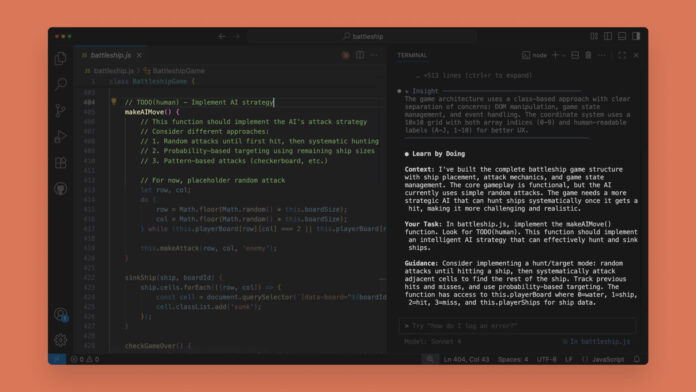Last spring, Anthropic introduced a training mode, a feature that changed the way Claude interacts. When this feature is enabled, the chatbot tries to suggest its own solution to the user after a question, rather than simply providing an answer. Since its introduction in April, training mode has only been available to Claude for Education users. Now, like OpenAI with its training mode, Anthropic is making this tool available to everyone.
Starting today, Claude.ai users will find a new option called “Learning” in the style dropdown menu. This feature is similar to the one Anthropic offers in Claude for Education. When you enable learning mode, the chatbot takes a Socratic approach, trying to help you find the answer to your question. However, unlike the real Socrates, who was known for bombarding strangers with endless questions, you can turn off learning mode at any time.
It is worth noting that Anthropic also offers two different approaches to this feature through Claude Code. First, there is an “Explanatory” mode, in which Claude generates summaries of its decision-making process while working, giving the user a better understanding of what it is doing.
For those who are just starting their career or hobby in programming, there is also a more reliable option, which is again called “Training.” Here, Claude occasionally stops working and marks the section with a “#TODO” comment to prompt the user to write five to ten lines of code. If you want to try these two features for yourself, update Claude Code to the latest version and enter “/output-styles.” After that, you can choose one of the two modes or Claude’s default behavior.
According to Drew Bent, head of education at Anthropic, the training mode, especially as it exists in Claude Code, is an attempt by the company to turn its chatbot into a more collaborative tool. “I think it’s great that there’s competition among all the AI labs for the best training mode,” he said. “I hope we can inspire something similar in the field of agent coding.”
Bent says that the original learning mode came about as a result of Anthropic’s conversations with university students, who kept coming back to the concept of “brain rot.” “We found that they themselves realized that when they simply copied and pasted something directly from the chatbot, it didn’t contribute to their long-term learning,” he said. When it came time to adapt this feature to Claude Code, the company wanted to balance the needs of new programmers with those of people like Bent, who have been programming for ten years or more.
“The learning mode is designed to help all these audiences not only complete tasks, but also develop and learn as they work, as well as better understand their code base,” said Bent. He hopes that the new tools will enable any programmer to become a “really good engineering manager.” In practice, this means that these users will not necessarily write most of the code in the project, but they will develop a keen eye for how everything fits together and which sections of code may need additional work.
Looking ahead, Bent says that Anthropic doesn’t “have all the answers, but obviously we’re trying to think about other features we can build” that extend the capabilities of the training mode. To that end, the company is opening up new Claude Code output styles to developers, allowing them to create their own training modes. Users can also change the way Claude communicates by creating their own settings for the chatbot.









